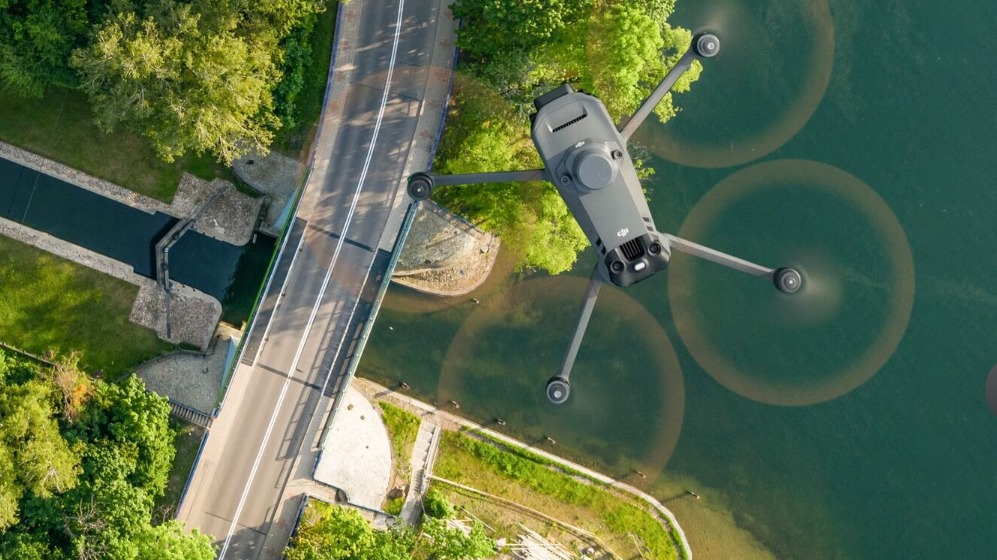Drones equipped with 4K cameras have revolutionized photography and videography, offering both amateur enthusiasts and seasoned professionals unprecedented creative possibilities. The stunning resolution provides filmmakers with incredible detail, while the accuracy is invaluable for mapping and surveying applications. Today, a drone without a 4K camera feels almost incomplete, limiting potential for detail retention, post-production flexibility, and achieving broadcast-ready quality.
Before diving into specific models, it’s essential to understand the key factors that separate a good 4K drone from a great one.
What to Consider When Choosing a 4K Drone
While 4K resolution is a significant factor, it’s not the only element to consider. Several other aspects contribute to the overall quality and usability of a 4K drone:
- Sensor Size: A larger sensor captures more light, leading to better image quality, especially in low-light conditions. Look for drones with sensors at least 1 inch in size for optimal performance.
- Frame Rates: Higher frame rates (e.g., 60fps or 120fps) allow for smoother video and the ability to create slow-motion footage.
- Dynamic Range: A wide dynamic range captures a greater range of light and dark tones, resulting in more detailed and realistic images.
- Image Stabilization: Effective stabilization is crucial for smooth, jitter-free video, especially in windy conditions.
- Flight Performance: Consider factors like battery life, wind resistance, transmission distance, and GPS accuracy for stable positioning. A drone with a great camera but poor flight performance will limit your ability to capture quality footage.
- Intelligent Features: Smart features like intelligent flight modes, obstacle avoidance, subject tracking, and follow-me modes can significantly enhance your drone’s capabilities and make it easier to capture complex shots.
- Build Quality and Intended Use: Evaluate the drone’s construction and durability. If you’re a filmmaker, prioritize drones that support advanced formats like RAW for maximum post-production flexibility.
Top 4K Drone Recommendations
Here are a few standout 4K drone options that cater to different needs and budgets:
DJI Mavic 3 Pro
The DJI Mavic 3 Pro features a triple-camera system, including a Hasselblad 4/3-inch CMOS wide-angle camera, a 70mm medium telephoto lens, and a 166mm long telephoto lens. The primary Hasselblad camera captures up to 5.1K video at 50fps and 4K at 120fps. It offers 10-bit D-Log M and HLG color profiles with up to 12.8 stops of dynamic range. With a flight time of up to 43 minutes, it’s ideal for professional cinematographers. The cost ranges from around $2,199 for the base model to $4,799 for higher-end versions.
DJI Mini 4 Pro
For those on a budget, the DJI Mini 4 Pro offers excellent value. Weighing less than 250 grams, this compact drone features a 1/1.3-inch CMOS sensor capable of capturing 4K/60fps HDR video and 48MP photos. It also supports 10-bit D-Log M and HLG color profiles. It comes with a standard battery offering 34 minutes of flight time or an extended battery option that increases it to 45 minutes. Obstacle avoidance and intelligent flight modes enhance its capabilities. It’s a great choice for travel vloggers, social media content creators, and hobbyists. It is usually available for under $800.
Autel Robotics EVO II Pro V3
The Autel Robotics EVO II Pro V3 can capture up to 6K video. It features an adjustable aperture from f/2.8 to f/11 and a maximum ISO of 44,000. The 1-inch Sony CMOS sensor delivers 6K video and 4K HDR. It has a transmission range of up to 9.3 miles and can withstand winds up to 27 mph. A 360-degree obstacle avoidance system enhances safety. This drone is well-suited for filmmakers and those needing precise 4K data for surveying and mapping.
DJI Air 3S
The DJI Air 3S combines professional-grade 4K image capture with portability. It features a dual-camera system: a 1-inch CMOS wide-angle camera (50MP) and a 1/1.3-inch CMOS medium telephoto camera (48MP) with 3x optical zoom. It records 4K/60fps video and supports 10-bit D-Log M color. With a flight time of up to 45 minutes, it’s ideal for travel vloggers and content creators. It also includes enhanced Nightscape sensing for low-light conditions.
Autel Robotics EVO II Dual 640T Enterprise V3
Designed for professional commercial drone pilots, particularly those in industrial inspections, the Autel EVO II Dual 640T Enterprise V3 captures 4K HDR video. Its dual-camera payload includes a 0.8-inch RYYB CMOS visual sensor (50MP stills and 8K/4K HDR video) and a high-resolution 640×512 thermal imager. This allows for capturing visual data alongside thermal imaging. It has a 42-minute flight time and a range of 15 kilometers. It’s suitable for inspectors, mapping operations, and solar farm maintenance.
Frequently Asked Questions
- What is the difference between 4K and 4K HDR? 4K refers to the resolution, while 4K HDR combines high resolution with a broader range of colors and contrast for more dynamic and realistic footage.
- Do I need a license to fly 4K drones? In the U.S., if you’re using the drone for commercial purposes, you’ll need a Part 107 certification from the FAA.
- How important is sensor size? A larger sensor captures more light, improving detail, color depth, and low-light performance.
